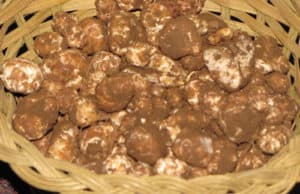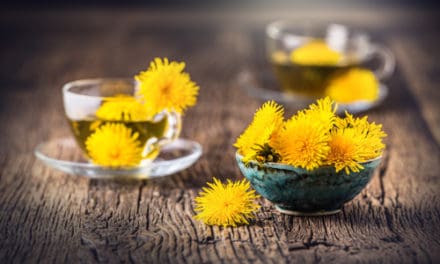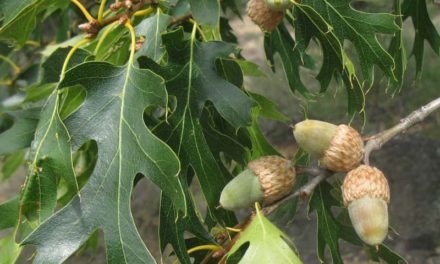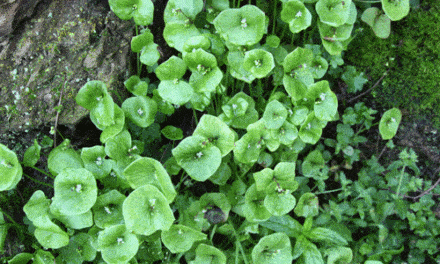Photos Courtesy of rickswildmushrooms.com

Recently, I had a nice chat with some wonderful folks about truffles. Apparently, their doggie dug up some truffles under some fir trees near the Mountain Meadows Reservoir in Lassen County. At first, they thought they were rocks; but when taken from their dog, they realized that they were not rocks at all, but some sort of mushroom, which they believed were truffles. I was intrigued; wild truffles here in Northern California!
Prior to this, about all I knew about truffles were that they grew in France, were very expensive, and you had to have a female pig with a blood-hound quality nose to find these underground delicacies. I was, however, quite mistaken! First, the good nose of my friend’s dog proved that a pig is not needed. Second, a brief online research showed that various truffle species may be found in many places throughout the world, including the forests and woodlands of NorCal. Third, although some fresh truffles, such as the black and white truffles from Europe are indeed very expensive, ranging from $95.00 to $160.00 per ounce when the wild harvest is plentiful; other species of truffles, such as fresh truffles from Oregon, can be purchased at bargain prices as low as $30.00 per ounce. However, as the saying goes, ‘You get what you pay for,’ meaning quality of flavor cost much more! For most folks even $30.00 per once is too much! Thus is born the allure to hunt for local wild truffles for oneself; and many folks do.

Truffles are the underground spore bearing ‘fruit’ of micro-filimentaceous fungus-plants. They are small roundish tubers varying from marble to golf-ball size; and they always are found in association with the roots of various trees, such as oak, pine, fir, and many other kinds of trees. In NorCal truffles can be found within oak woodlands, Douglas fir and pine habitats.
Truffle species, and the trees they are associated with, thrive upon a symbiotic (mutually beneficial) relationship. The micro filaments, called hyphae, of the truffle fungus are much more efficient in absorbing water, minerals and decayed soil nutrients, than the roots of the associated trees. The hyphae actually penetrate the roots of the tree where a mutually beneficial exchange of nutrients occurs: soil nutrients for the tree from the truffle hyphae, and photosynthetic nutrients from the tree for the truffles!
The truffle tubers themselves are usually produced during the rainy seasons, growing forth from the hyphae to their respective sizes. The tubers must be mature and ripe before the prized flavor is achieved. Only then can the truffle hunting pig, or dog, or bear, or deer, or squirrel, and many other forest critters smell them as a seasonal food source. In fact, the truffle fungus is dependent upon such hungry creatures for spore dispersal. Unlike an above ground mushroom whose spores are dispersed upon the wind, the spores of an underground truffle cannot be dispersed to new locations unless they are dug up and eaten by an animal. Just as berry seeds are dispersed by birds, so it is with truffle spores after being eaten by mammals! The ecological benefits of the truffles goes far beyond just the trees and hungry critters; it extends to many other creatures and plants that are dependent upon a healthy and balanced web of life.

For those NorCal folks who might like to learn the skills of truffle hunting, my advice is this: research well. Learn the local truffle species that are worth while hunting. Learn the difference between an edible truffle and non edible look-alike. Learn which trees are preferred by truffles. Get permission to truffle hunt on private woodlands. Invest in a trained truffle hunting pig, or dog, who can smell out just the ripe truffles. And harvest truffles in a way that is sustainable and respectful to the environment.
Finally, truffles are used, like a spice, to enhance other foods with their prized flavor. So, I first recommend buying some local truffles, and trying them in some recipe, before investing in a miss piggy! * Read more about edible truffles of the Northwest online at rickswildmushrooms.com/mushrooms/blackwhite-oregon-truffles












